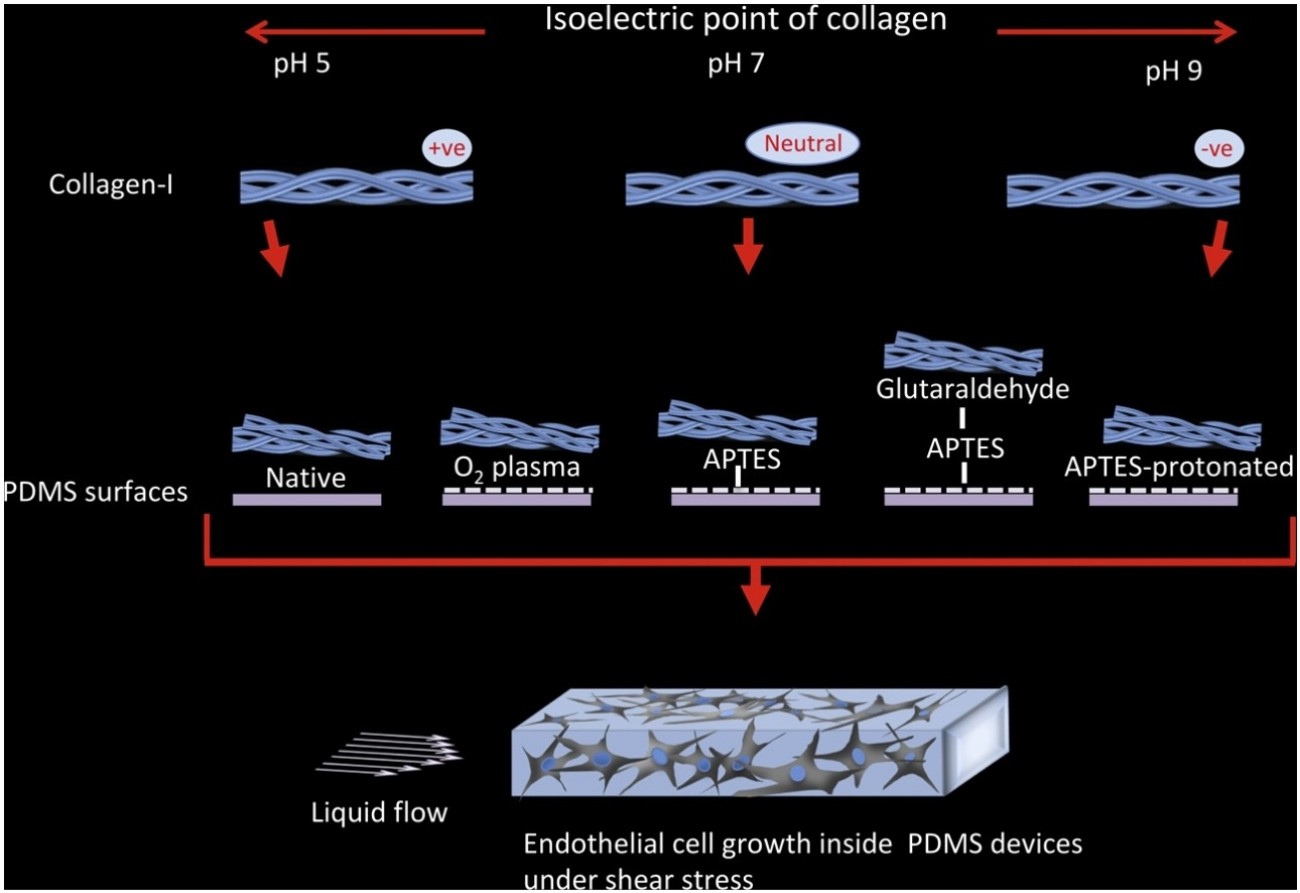Project:
The in-vitro investigation of cells in micro-channels offers an alternative to animal experimentation. Due to their transparency PDMS and SU8 are used as substrate material enabling the investigation with light microscopy. Since cells can only be analysed on hydrophilic surfaces a plasma treatment of these hydrophobic substrates is performed. While for SU8 the hydrophilicity is stable, PDMS has to be modified with linkers (APTES) that improve the cell growth. It is necessary to investigate the created bond between the PDMS and APTES since the quality of the cell adhesion is directly connected to it. The adhesion of the cell on the PDMS can be investigated with different flow forces in the micro-channel.
Publications:
Publications:
- MF Kilb, VI Engemann, A Siddique, RW Stark, K Schmitz (2021):
Immobilisation of CXCL8 gradients in microfluidic devices for migration experiments
Colloids and Surfaces B: Biointerfaces 2021 198, 111498.
DIO: https://doi.org/10.1016/j.colsurfb.2020.111498
[Article]
- A Siddique, I Pause, S Narayan, L Kruse, RW Stark (2021):
Endothelialization of PDMS-based microfluidic devices under high shear stress conditions
Colloids and Surfaces B: Biointerfaces 2021 197, 111394
DOI: https://doi.org/10.1016/j.colsurfb.2020.111394
[Article] - MF Kilb, V Engemann, A Siddique, RWvStark, K Schmitz (2021)
Immobilisation of CXCL8 gradients in microfluidic devices formigration experiments
DOI: https://doi.org/10.1016/j.colsurfb.2020.111498
[Article] - Siddique, Asma ; Meckel, Tobias ; Stark, Robert W. ; Narayan, Suman :
Improved cell adhesion under shear stress in PDMS microfluidic devices.
[Online-Edition: http://dx.doi.org/10.1016/j.colsurfb.2016.11.011]
In: Colloids and Surfaces B-Biointerfaces, 150 S. 456-464. ISSN 0927-7765
[Article] , (2017)



